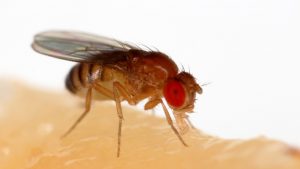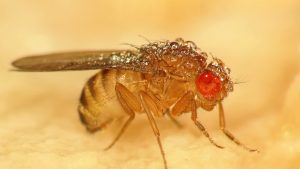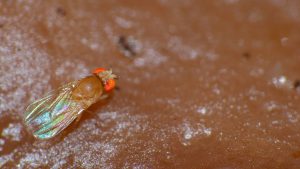What do fruit flies do?
Amongst the wide spectrum of insects known to thrive in your garden or in fields, the larvae of fruit flies are the most dreaded, on account of their ability to turn many fruits and vegetables into soft, gooey slop.
Fruit flies attack and damage most soft-skinned fruits and certain hard-skinned products as well. Citrus and summer fruits, berries, tomatoes, grapes, peppers and olives are only a few types of crop particularly susceptible to the pests. Once sexually mature, the female adult fly lays countless of her tiny eggs in the flesh of ripe and ripening produce. Upon hatching, the fly larvae (maggots) begin feasting on the flesh of the fruit, causing it to decay and fall to the ground.
While it’s a simple nuisance, albeit an unsightly one, to someone growing fruit or vegetables in their garden, it is one of the many problems the horticultural industry faces. Billions of dollars are spent annually on various prevention and control measures, and still, the production losses are enormous.
How do you identify a fruit fly?
For such grand nuisances, fruit flies are relatively tiny, with adults typically reaching only an eight of an inch (3mm) in length. Their thorax tends to be tan or orange in color, with transverse black rings across the abdomen and a grey underside. Brick-red eyes are typical, although some can be seen with dark brownish or even black eyes. Their wings are translucent and bristles emerge from their antennae.
What does a fruit fly maggot look like?
The eggs from which fruit flies hatch from may be too small to see, but their maggots are visible to the naked eye. Fruit fly maggots have soft bodies, and wriggle due to their lack of legs, making them look a bit like tiny worms. They are usually a creamy white color.
Are fruit flies harmful?
It is no question that fruit flies are a source of annoyance and irritation, but they can also be incredibly dangerous to one’s health.
- Related: Do fruit flies bite?
The pests are flying vectors of disease. Fruit flies feed and mate on decaying matter, so by their mere existence, it is only expected that they will come into contact with a large number of microorganisms, including certain dangerous bacteria such as Salmonella, Staphylococcus, E. Coli, and listeria.
These germs are transmitted to food and surfaces when fruit flies regurgitate during their meals, through their excrements, or simply through mechanical contamination through body contact, and are frequent causes of food poisoning and wound infection, which can become critical and send you to the hospital.
How can you tell the difference between a drain fly and a fruit fly?
To most people, a fly is a fly. A fly infestation is a fly infestation. All are vectors of disease. But there are countless species, each with their own characteristics. It is only best to know the difference between the different types of flies who commonly permeate your home, so one can deal with each accordingly.
Drain flies and fruit flies are some of the most common pests. One occupies your bathrooms and laundry room while the other takes over your kitchen counter and fruit basket.
Both flies are around the same size, at about an eighth of an inch. The drain fly, also known as a sink or sewer fly, has a moth-like appearance with a short body and fuzzy wings, hence its other common name, the moth fly. They are typically dark colored, with speckled wings. They are easy to tell apart from fruit flies, who are easily distinguishable with their tannish, fleshy bodies, translucent wings, and vibrant red eyes.
Click here to buy the Green Gobbler Fruit Fly Killer on Amazon, only for $29.99!




